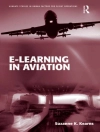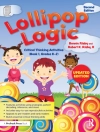In recent years many countries have built or renovated schools incorporating open plan design. These new spaces are advocated on the basis of claims that they promote fresh, productive ways to teach and learn that address the needs of students in this century, resulting in improved academic and well-being outcomes. These new approaches include teachers planning and teaching in teams, grouping students more flexibly, developing more coherent and comprehensive curricula, personalising student learning experiences, and providing closer teacher-student relationships. In this book we report on a three-year study of six low SES Years 7–10 secondary schools in regional Victoria, Australia, where staff and students adapted to these new settings. In researching this transitional phase, we focused on the practical reasoning of school leaders, teachers and students in adapting organisational, pedagogical, and curricular structures to enable sustainable new learning environments. We report on approaches across the different schools to structural organisation of students in year-level groupings, distributed leadership, teacher and pre-service teacher professional learning, student advocacy and wellbeing, use of techno-mediated learning, personalising student learning experiences, and curriculum design and enactment. We found that these new settings posed significant challenges for teachers and students and that successful adaptation depended on many interconnected factors. We draw out the implications for successful adaptation in other like settings.
विषयसूची
Acknowledgments; Acronyms; Overview of Research; Researching the Outcomes of the Bendigo Education Plan; Quantitative Research on Personalising Learning and Wellbeing in Open-Plan Up-Scaled Learning Communities; Personalising Learning: Theory and Enactment; School Leaders and Teachers: Challenges in Adaptation and Reasoning; Restructuring Teaching and Learning in Open-Plan Schools; Learning in Technologically-Mediated Spaces in Open-Plan Settings; Distributing Leadership in Open-Plan Schools; Adapting to Teaching in Open-Plan Up-Scaled Learning Communities; Preparing Pre-Service Teachers for Open-Plan Learning Environments; Learner Effects and Implications; Student Views of Personalising Learning in Open-Plan Up-Scaled Learning Communities; Building relationships: Teacher Advisor Programs in BEP Schools; Student Wellbeing in Open-Plan Up-Scaled Learning Communities Including Gendered Effects; Conclusion and Implications for Teaching and Learning in Like Settings; New Practices, New Knowledge and Future Implications for Learning in Open-Plan Settings for Low Socio-Economic Background Students; Epilogue: The End of the Beginning; References; Index.












